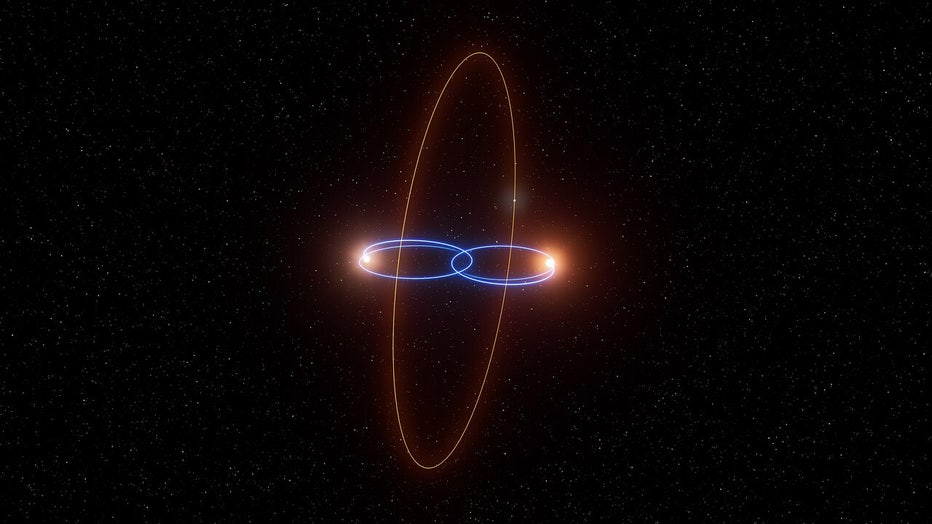Astronomers find 'Tatooine' planet orbiting two stars
A planet in a perpendicular orbit around 2 brown dwarfs
Using ESO’s Very Large Telescope (VLT), astronomers have found an exoplanet orbiting a pair of peculiar stars at an angle of 90 degrees. (Credit: ESO/Angelos Tsaousis and Martin Wallnet, Raquel Yumi Shida and Edison Arango, Amy Briggs and Sean Bromilow, Luis Calçada, Cristoph Malin (christophmalin.com), Martin Kornmesser, Daniele Gasparri, VPHAS+ team and Paola Amico, Mariya Lyubenova)
If you’re a "Star Wars" fan, you might be excited to learn scientists may have discovered a planet that’s orbiting two stars, much like the fictional planet of "Tatooine."
Far, far away
Dig deeper:

FILE - This is an artist’s impression of the exoplanet 2M1510 (AB) b’s unusual orbit around its host stars, a pair of brown dwarfs. (ESO/L. Calçada)
The planet is located about 120 light years away from our solar system, according to astronomers at the University of Birmingham, U.K.
A light year is nearly 6 trillion miles, in case you were trying to convert the distance.
The exoplanet appears to take an unusual path around two brown dwarf stars, circling at a right angle.
Brown dwarfs are sometimes called failed stars because they’re lighter than stars but are heavier than gas giant planets.
The pair of brown dwarfs were first discovered years ago and scientists noticed that the twins eclipse each other so one is always partly blocked when seen from Earth.
In a new analysis, researchers found that the brown dwarfs' motion was changing — a quirk that's less likely to happen if they circled each other on their own. The research was published in the journal Science Advances.
The planet was discovered using the European Southern Observatory’s Very Large Telescope (LVT).
This isn’t the first "Tatooine"-like exoplanet
Yes, there are actually several dozen planets that are orbiting two stars throughout the cosmos, scientists said.
But the new planet’s odd orbit sets it apart. Though it hasn't been directly spied on, scientists say more research is needed to be sure it's out there and figure out its mass and orbit.
What they're saying:
"I wouldn't bet my life that the planet exists yet," said Simon Albrecht, an astrophysicist with Aarhus University who had no role in the new study.
Probing these wacky celestial bodies can help us understand how conditions beyond our solar system may yield planets vastly different from our own, said study author Thomas Baycroft with the University of Birmingham.
Planets circling twin stars "existed in sci-fi for decades before we knew that they could even really exist in reality," he said.
The Source: Information for this article was gathered from The Associated Press and a news release shared by the European Southern Observatory.

